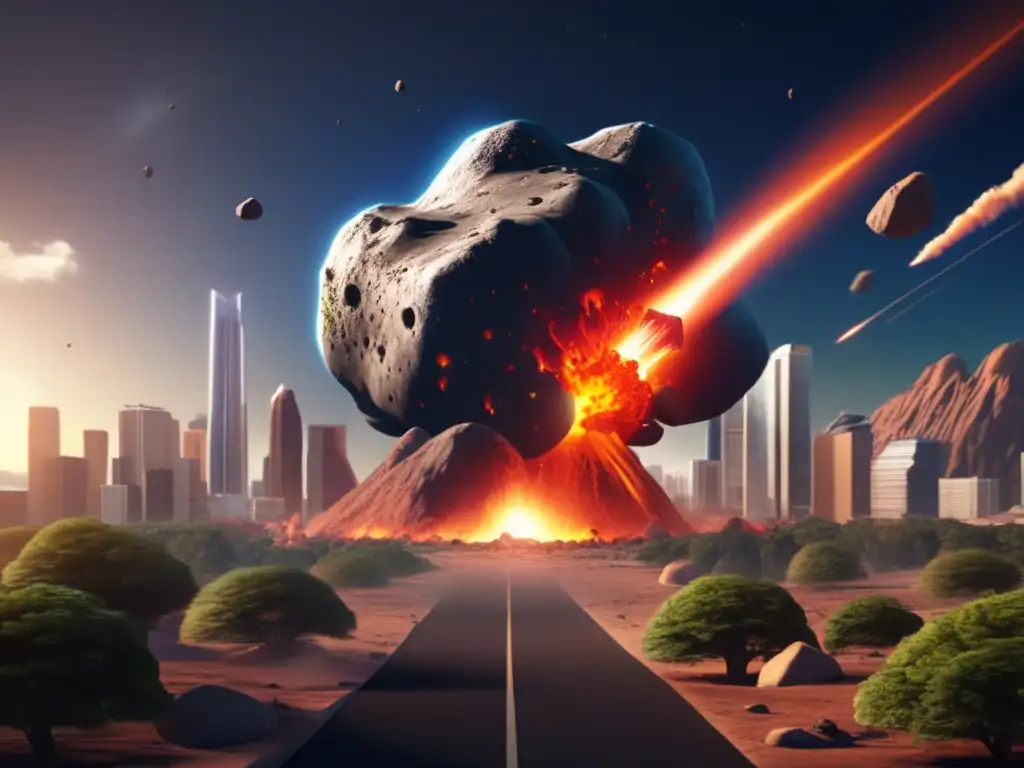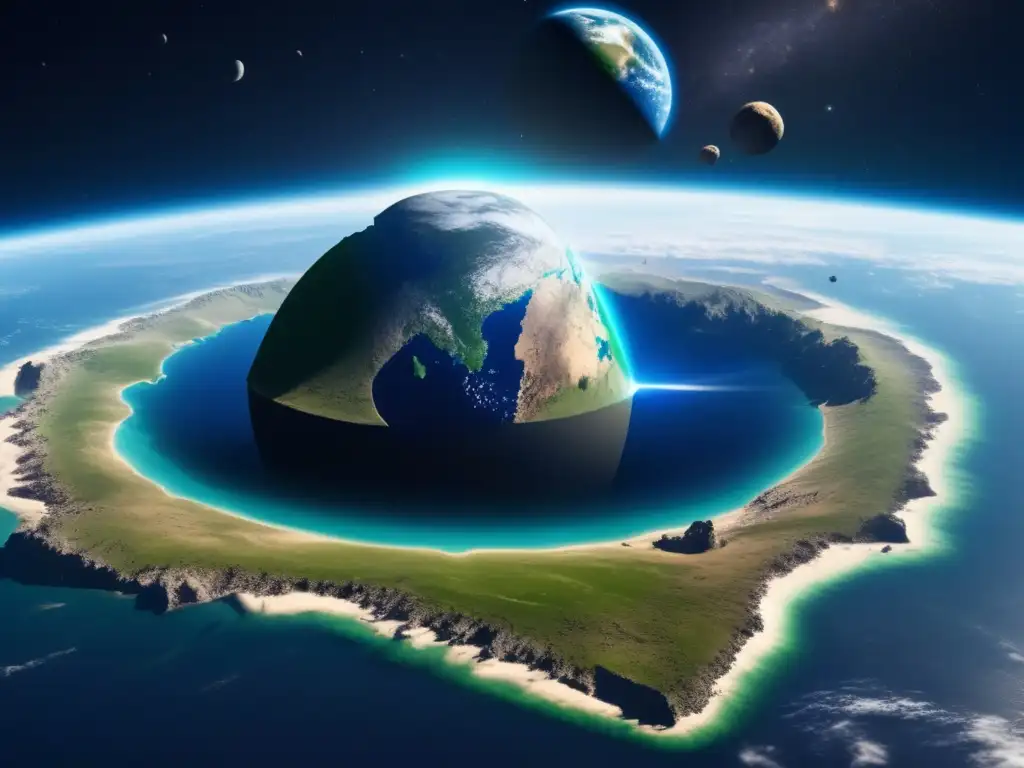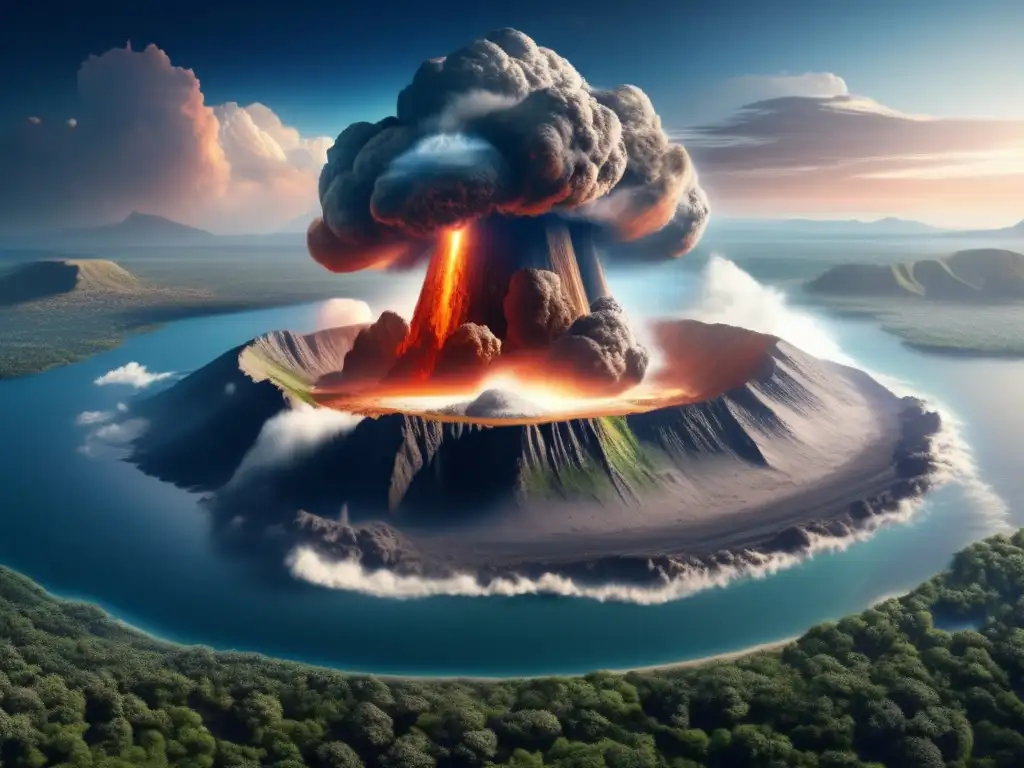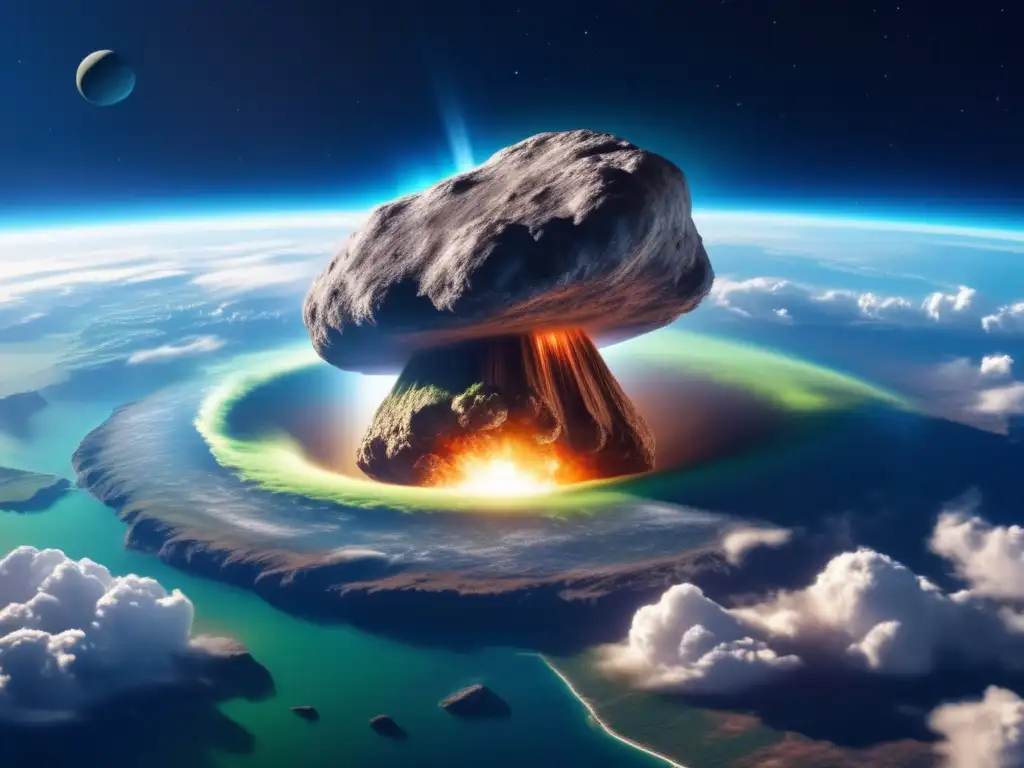Armored Earth: Our Planet's Defenses Against Asteroid Impacts

Introduction
Earth has a long history of asteroid impacts, with the most famous being the Chicxulub impact that contributed to the extinction of the dinosaurs. As such, understanding how our planet defends itself against these potential threats is of utmost importance. In this article, we will explore the various mechanisms that protect our planet from asteroid impacts and examine the latest research on the topic.
The Atmosphere

The Role of the Atmosphere in Asteroid Defense
One of the first defenses that an incoming asteroid encounters is our planet's atmosphere. The atmosphere acts as a natural shield against smaller asteroids, as the friction they experience causes them to heat up and burn upon entry. This is why meteoroids, which are smaller chunks of asteroids, become meteors or shooting stars when they enter our atmosphere. However, larger asteroids can still make it through, causing significant damage upon impact.
The Tunguska Event
The Tunguska event in 1908 is a prime example of how the atmosphere can serve as a vital defense mechanism. An asteroid or comet fragment estimated to be about 40 meters in size exploded in the Earth's atmosphere over Siberia. While the explosion caused significant damage, including the flattening of trees across an area of 2,000 square kilometers, no one was killed due to the remote location of the event.
The Limitations of the Atmosphere
While the atmosphere serves as an effective defense against smaller asteroids, it is not foolproof. Larger asteroids can penetrate the atmosphere, causing significant damage and even threatening human lives. As such, scientists continue to explore other ways to protect our planet from these potential dangers.
Gravity and Orbiting Bodies

Earth's Gravity and Asteroid Defense
The gravity of our planet has a significant impact on the trajectory of asteroids. Our planet's gravity can alter the path of an asteroid, causing it to miss the Earth entirely. Additionally, if an asteroid does collide with our planet, the gravitational force of the Earth can cause fragments to get pulled back into space rather than falling back to Earth, reducing damage caused by secondary impacts.
The Role of Orbiting Bodies
In addition to our planet's gravity, orbiting bodies also play a role in asteroid defense. The Moon, for example, acts as a natural shield against incoming asteroids due to its relative size and proximity to the Earth. The gravitational pull of the Moon alters the paths of asteroids, sending them hurtling towards the Moon instead of the Earth. Additionally, the Moon's surface is covered in craters, evidence of past impacts that would have otherwise struck our planet.
Limitations of Gravity and Orbiting Bodies
While gravity and orbiting bodies offer some protection against asteroids, they are not always effective. In some cases, the gravity of other planets or asteroids can alter the path of an incoming asteroid, causing it to hit our planet. Additionally, larger asteroids can be too massive to be significantly impacted by gravity or orbiting bodies, requiring additional defense mechanisms.
Advanced Warning Systems

The Importance of Advanced Warning Systems
One of the most effective tools in defending against asteroid impacts is advanced warning systems. These systems utilize a variety of techniques to detect incoming asteroids, providing scientists with ample time to develop and implement effective countermeasures.
NEOs and Potentially Hazardous Asteroids
Near-Earth Objects (NEOs) are asteroids that orbit the Sun and come within 30 million miles of Earth's orbit. Of these NEOs, Potentially Hazardous Asteroids (PHAs) pose an immediate threat to our planet due to their size and proximity. Advanced warning systems help to keep track of these PHAs, providing scientists with the necessary data to plan and implement asteroid defense strategies.
Limitations of Advanced Warning Systems
The effectiveness of advanced warning systems depends on the accuracy of the data collected and the speed with which scientists can respond to any potential threats. Additionally, some asteroids may go undetected until they are too close to our planet to make any meaningful preparations.
Frequently Asked Questions

-
Can asteroids be completely destroyed before impact?
It is difficult to completely destroy an asteroid before impact, as even small fragments can reach the Earth's surface. However, several techniques have been proposed for diverting or deflecting asteroids, including nuclear explosions or kinetic energy projectiles.
-
What is the probability of a large asteroid impact?
The probability of a large asteroid impact is relatively low, at around once every few thousand years.
-
What is the difference between a meteor, meteorite, and asteroid?
A meteor is a meteoroid that enters the Earth's atmosphere, causing it to burn up and become a shooting star. A meteorite is a meteor that survives atmospheric entry and hits the Earth's surface. An asteroid is a large, rocky object that orbits the Sun.
-
What are some ongoing initiatives to study and protect against asteroid impacts?
Several organizations, including NASA and the European Space Agency, are actively researching asteroid defense strategies. Initiatives include asteroid deflection missions, advanced tracking systems, and international cooperation on asteroid defense.
-
What can individuals do to prepare for an asteroid impact?
Individuals can stay informed about potential threats and be prepared to follow emergency protocols if necessary. It is also helpful to support organizations that research and develop asteroid defense strategies.
Conclusion
While the threat of asteroid impacts is always present, our planet has developed several defense mechanisms to protect against them. From the atmosphere to advanced warning systems, science and technology continue to provide us with tools to better understand and mitigate the potential dangers posed by asteroids. By continuing to invest in research and collaborate on international initiatives, we can ensure that our planet remains armored against any potential threats.
Thank you for reading this article on Asteroid Realm. We encourage you to share your thoughts on the topic in the comments section and to explore our website for more fascinating content on asteroids and space exploration.
Additional Resources

European Space Agency: Asteroids - How to Deflect an Asteroid
Space.com: Asteroid Defense News
 Tales Of The Unseen: Uncovering Invisible Impact Craters
Tales Of The Unseen: Uncovering Invisible Impact Craters Rubble And Renaissance: Recovery And Regrowth Following Asteroid Impacts
Rubble And Renaissance: Recovery And Regrowth Following Asteroid Impacts The Specter Of Space: Living With The Threat Of Asteroid Strikes
The Specter Of Space: Living With The Threat Of Asteroid StrikesIf you want to discover more articles similar to Armored Earth: Our Planet's Defenses Against Asteroid Impacts, you can visit the Asteroid Impacts category.
Leave a Reply

Articulos relacionados: